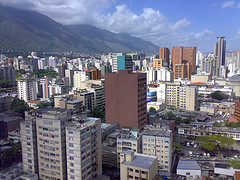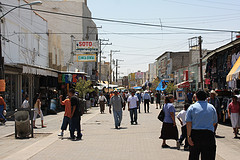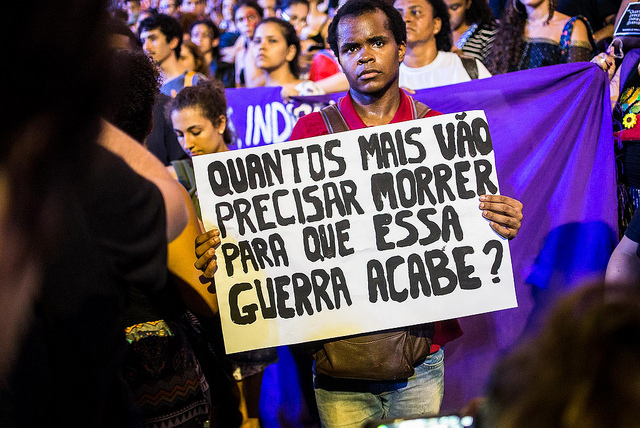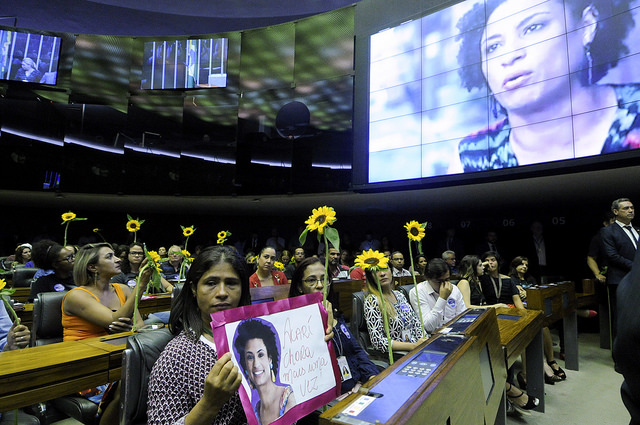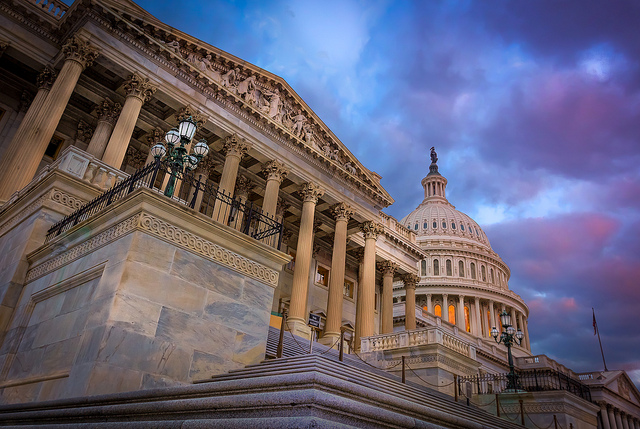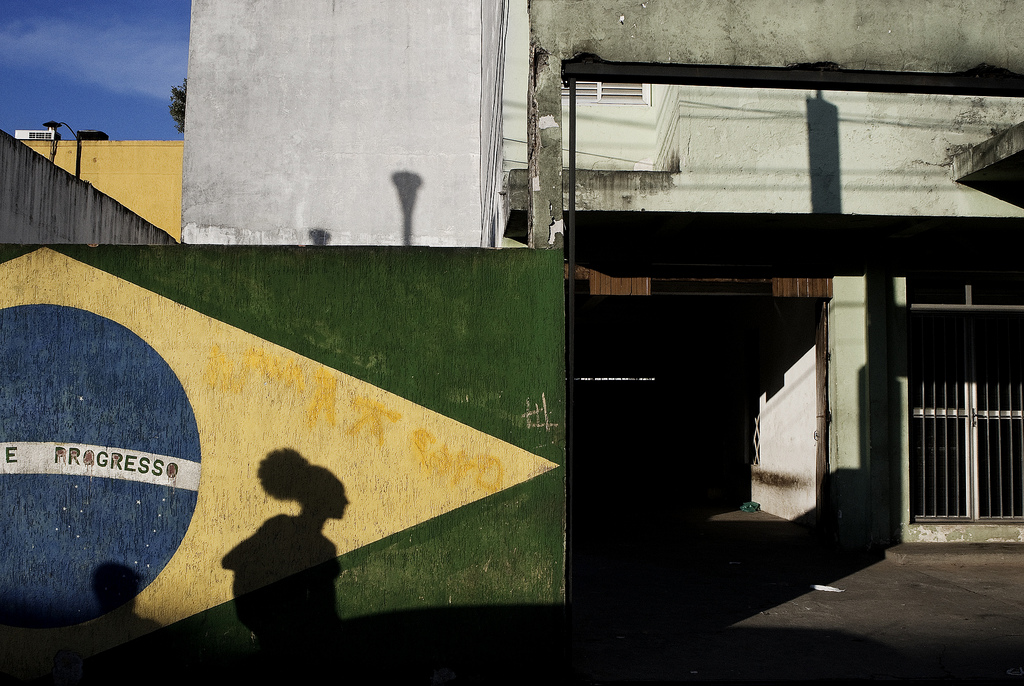
Latin America: Week in Review
School Shooting Leaves 10 Dead in São Paulo Suburb
March 14, 2019 By Staff
TODAY IN LATIN AMERICA
BRAZIL: A school shooting in a suburb of São Paulo has left 10 dead, including the two attackers themselves. The shooters, two former students aged 17 and 25, entered the Suzano-area school armed with guns, knives, axes and crossbows. They killed five students, two administrators and the owner of a nearby car store before taking their own lives.
Brazil has strict gun ownership laws, but President Jair Bolsonaro has said he wants to relax these laws. The Supreme Court is also debating a measure proposed by Bolsonaro that would allow police to arrest younger minors. The last major school shooting in Brazil occurred in 2011.
HEADLINES FROM THE WESTERN HEMISPHERE
NORTH AMERICA
UNITED STATES: The American Civil Liberties Union obtained court documents that show that federal immigration agents are using a national private database of license plate scanners to track migrants. More than 1,000 pages of documents indicate that some law enforcement departments have granted ICE access to personal data of drivers, which ICE is using to track undocumented immigrants. Immigration advocates say the use of this data could lead to more arrests of undocumented immigrants without a criminal record. A number of the police agencies providing the data are located in California, a sanctuary state which claims to be restricting collaboration between local police and ICE. Currently, more than 9,000 ICE agents have access to the database.
MEXICO: The Mexican government has launched a search for 19 missing migrants pulled from a bus by armed men in Tamaulipas. Last month, 25 other migrants were kidnapped on a different bus, leading to a total of 44 missing people. President Andrés Manuel López Obrador has indicated a need for investigation, saying, “There is a theory that this is a method that is used to get into U.S. territory. It’s not that they disappear, but rather that they cross the border that way.” These kidnappings, however, are eerily similar to ones from 2010 and 2011, in which several passengers were dragged off buses by drug gangs, killed and buried in mass graves.
MEXICO: A new report indicates that Mexican marines improperly used machine guns mounted to helicopters in a 2018 shooting in the border city of Nuevo Laredo that killed three civilians. The National Human Rights Commission report states that the targeted drug cartel gunman did not present an active threat when gunshots were fired. A woman and two children were killed in the crossfire, as well as one marine and four gunmen. Twelve other marines were also wounded during the fight.
CARIBBEAN
CUBA: A cemetery dedicated to U.S. settlers in Cuba was declared a National Historic Site yesterday. Located off the coast of Cuba in the Isla de la Juventud, the American Cemetery serves as the final resting place for over 300 U.S. nationals who settled in the island after the Treaty of Paris ended the Spanish-American War in 1898. Known as Isla de Pinos at the time, the territory became part of Cuba in 1925 following the Hay-Quesada Treaty.
CENTRAL AMERICA
GUATEMALA: Last night, a bill that would grant amnesty to people convicted for war crimes during Guatemala’s 36-year civil war was delayed by a lack of quorum in the national legislation. The Inter-American Court on Human Rights issued a resolution that ordered Guatemala to stop the Law of National Reconciliation, under the premise that granting a blanket amnesty to people engaged with grave human rights violations “would generate serious consequences in the country’s stability.” Leading up to yesterday’s session in Congress, several human rights organizations and U.S. lawmakers also denounced this legislation. The bill states that 30 former army officers and several other civil patrolmen would be freed within 24 hours of the bill’s enactment. Debate continues today.
NICARAGUA: Yesterday, an icon of the Nicaraguan protests against Daniel Ortega fled to Costa Rica. Known as the “marathon man,” Alex Vanegas rose to prominence after running laps in Managua’s roundabouts for every student killed during the anti-government demonstrations of 2018. His son Byron Vanegas indicated that his father, 62, had departed for Costa Rica in search of medical attention. Vanegas was one of the many political prisoners released ahead of the now-stalled peace talks in Nicaragua.
ANDES
BOLIVIA: In an effort to curb a rise in violence against women, President Evo Morales significantly strengthened the gender violence police task force and filled its command structure with women police officers in a new policy change yesterday. In 2018, there were 37,000 cases of violence against women including 128 homicides. The government also launched an app that includes a panic button to notify the taskforce of a gender based crime in real time.
COLOMBIA: UN Secretary-General António Guterres expressed his concern over the delayed implementation of transitional justice, the backbone of the peace agreement between the Colombian government and FARC rebels. The statement comes after President Iván Duque declined to sign the law that would have provided the judiciary body with its legal framework. Duque and his far-right party claim the transitional justice system will lead to impunity despite support from congress, the supreme court and the international community.
VENEZUELA: China has offered to provide President Nicolás Maduro’s government with support and technical assistance to end the worst energy blackout in Venezuela’s history. From Beijing, the Chinese foreign minister said he was “deeply concerned” over the reports that the Venezuelan energy grid had been hacked. Maduro blames the week-long energy crisis on hacking attacks originating in U.S. cities.
SOUTHERN CONE
CHILE: Chile is building Latin America’s first thermosolar plant in the northern Atacama desert. The project, called Cerro Dominador, will produce enough energy for 250,000 homes using a new technology that allows the production of energy even after the sun goes down. The project is part of Chile’s ambitious plan to achieve 100 percent green renewable energy production by 2040.
